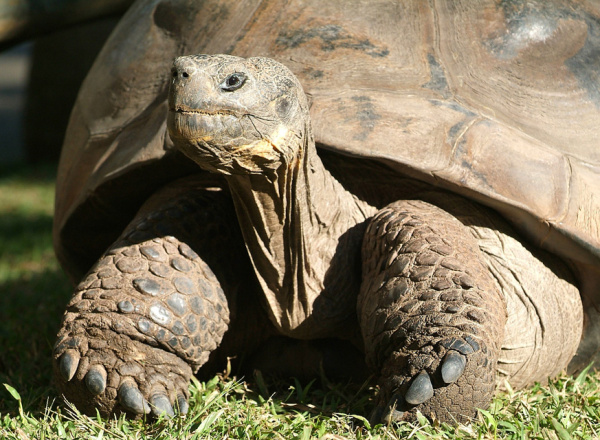
To listen to today’s reflection as a podcast, click here
The British sailors who began to make regular visits to the Galapagos Islands in the 18th and 19th centuries didn’t know what to make of the giant tortoises they found there.
Aside from a few remote islands in the Seychelles in the Indian Ocean, they existed nowhere else on the planet.
Hungry sailors, unfortunately, quickly discovered that the Galapagos residents were delicious. When the HMS Beagle arrived in 1835 as part of its global scientific expedition, the crew carried aboard 40 “little ones,” each about the size of a dinner plate. It was later determined these tortoises were about five years old.
Some were destined to become turtle soup. Others went back to England as family pets. The rest remained under the supervision of the expedition’s soon-to-be-famous naturalist, Charles Darwin.
Over time, the survivors were distributed to zoos and private collections. Three of them, who were dubbed Tom, Dick, and Harry, were donated to the Brisbane Botanic Gardens in Australia.
We should pause here and note (in this era of lively conversation about gender) that it was ultimately determined that both Tom and Harry were in fact females.
Harry, who consequently became known as Harriet, turned out to be a hardy soul. She outlived Darwin, who died in 1882. She made it all the way to the end of the 19th century.
But Harriet was just getting started. Subsisting chiefly on her favorite food – hibiscus flowers – she lived through the sinking of Titanic, World Wars I and II, the 1927 New York Yankees, the Great Depression, the New Deal, Elvis, Woodstock, Watergate, and the disco era. She lasted longer than Larry King’s first seven marriages. For a while she was even under the care of Steve Irwin, the Australian “Crocodile Hunter” and TV personality.
Harriet (that’s her in the picture above) finally succumbed to heart failure in June 2006. By this time she was closer to the size of a dinner table than a dinner plate, and scientists estimated her age to be about 175.
Before you undertake an internet search for the Tortoise Super Longevity Diet, consider the fact that the Greeks of the ancient world utilized two different words for “life.”
Bios means physical life. Harriet was blessed with an extraordinary chronology, even though her longevity pales in comparison to some whales (which can live up to 225 years) and Greenland sharks (which, incredibly, have been known to have as many as 500 candles on their birthday cakes).
The other Greek word is zoe. It’s a qualitative assessment of life – as in, “this party could sure use some life.”
Without rendering judgment as to the quality of Harriet’s zoe, most human beings fantasize about living a long, long time. Entire industries are committed to extending our bios, declaring that we owe it to ourselves to do everything we possibly can to look as young as we can while growing older – paying big bucks for smooth skin, flat stomachs, improved memory, and muscles that don’t ache so much when we put our feet on the floor in the morning.
But the message of Jesus goes in a totally different direction.
He said, “I have come to bring you life [zoe is used here, not bios] in all of its fullness” (John 10:10). Throughout his commentary on the Gospel of John, New Testament scholar Dale Bruner translates zoe not just as “life,” but “deep, lasting Life” – the kind of life that transcends mundane human existence in this world, and takes us right on into life-that-never-ends in the next.
With Jesus there is no promise of how long we might live – only that those who choose to trust him will experience Life with a capital L.
Then he adds that he alone is the One who can provide such an extraordinary gift (John 14:6).
What kind of life are you seeking these days?
More years with fewer wrinkles? Or a deeper, more joyful experience of the presence of God?
If you opt for the latter, hibiscus plants everywhere won’t have to flinch whenever you enter the room.
